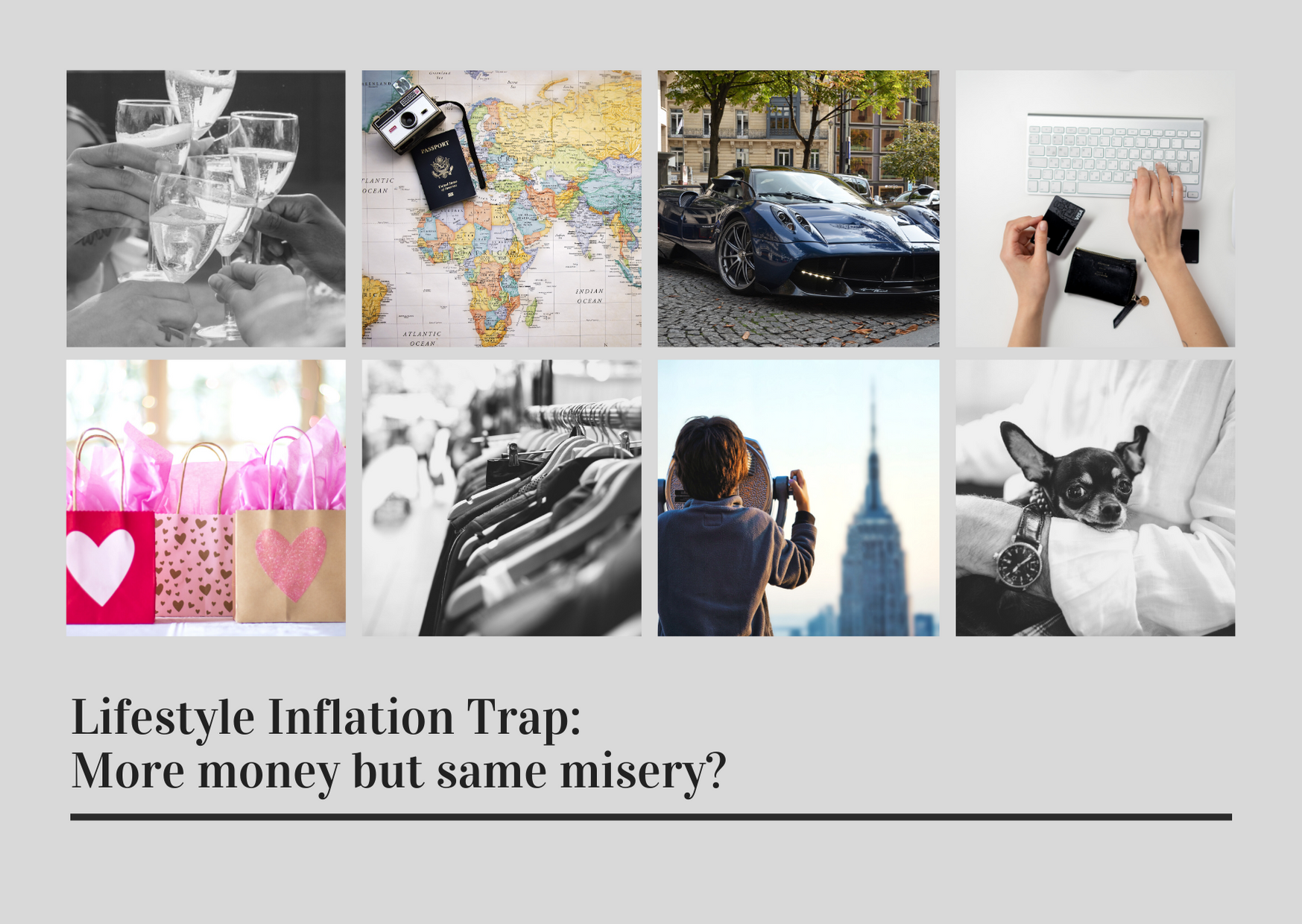When we earn more money, it is natural to spend more because we can afford it. We are entitled to treat ourselves with better things since we worked hard for money. There is nothing wrong to upgrade our lifestyle, but the problems occur when these spending habits secretly creep.
What is lifestyle inflation?
Lifestyle inflation happens when the income increase over time, and the expenses is keeping pace with the rising income. It’s not a problem if the savings increase substantially, but this is hardly the case. When we get promoted, enjoying higher income and bonuses, we will naturally think about what items to purchase or upgrade. It can begin from upgrading one-off purchases, e.g., a designer bag, a set of expensive cookware to the luxury version of upgrading a better car, or a bigger house. Anyway, we work hard for it, so we deserve it, right? The answer is yes, if only we knew how to control and set a limit to it, but this remains a challenge to most of us.
Lifestyle inflation is a secret trap. Why?
Lifestyle is the way or style we are living. It reflects our habits, attitudes, social status, tastes, economic level, etc., that together constitute the mode of living. It’s the lives we live in, therefore it is not easy to detect and hard to avoid.
Lifestyle inflation will only become a stressful problem when we spend too fast relative to our income. We spend all the extra money we are making and there is no additional saving in the emergency fund, nor more money invested into our financial goals – that is a red flag. This problem will blow up when we are facing difficult financial situations e.g., business/economy downturn, retrenchment, pay cut etc. We need to ask ourselves, is this the life we want to live? Earning higher income but still living from paycheck to paycheck? We cannot escape the ‘rat race’ and is way beyond reaching financial independence. The reality of lifestyle inflation is – easy to upgrade, but challenging to downgrade.
So, what are the common lifestyle inflation traps?
Young Working Adults
When young adults get the salary, that is the opportunity to start living more comfortably and buying things that previously could not. It is fine to occasionally splurge, however, once over committing an expensive car relative to their salary, one may have tendencies to miss out on any opportunity that arises. For example, a young adult earning RM3,500 but paying RM1,450 monthly instalment for a Japanese sedan, which constitute 40% of take-home pay, minus the living expenses, how much left to set aside to build sufficient emergency money? Or having the flexibility to take time off from work?
Family with Children
Adulthood comes with expensive milestone, including marriage, buying a house, cars and having children. Once the wallet size increases, we are more tempted to overspend on better restaurants, more vacations, increase wardrobe sizes, more shoes, more extra curriculum for the kids, even branded diapers. That’s how family lifestyle creeps and eating away our wealth.
It’s our human nature to crave convenience and comfort. There is nothing wrong if we know how to budget our money efficiently.
How to manage lifestyle inflation?
First, you need to review your financial plan. What have you accomplished so far? How much gap now? If you do not have one, at least do a simple assessment of your current financial health. Are you financially healthy? Or loaded with excessive debts?
Next, you may revisit your existing goal. Ask yourself some questions below:
– With the rising income, is there any changes to your current financial goals?
– Is there any amendment to your existing goals? e.g., increase, reduce the value of existing goals.
– Is there a new goal? It can be a short, medium or long term goal.
– What is your desired lifestyle expenditure?
– Would you consider materialize your desired goal faster by allocating more money to it?
– Which goal would you like to prioritise? Which one can be a trade-off?
By now, your new financial future is mapped out. You need to aware of how does lifestyle expenses impact the long term goal. Once you see the big financial picture, you will be guided on the amount of money to set aside for serious financial goals (e.g. retire early, support your children’s education to PhD). The sensible things to do is always to fund the ‘serious goals’ first, and the remaining balance spends it on lifestyle, which is the short term wants.
Lifestyle financial planning brings clarity to your current and future financial situation, and permit you to spend your money without guilt! It is always a trade-off to balance your short-term wants with long-term needs with the available resources in hand.
Lifestyle inflation is a silent trap. Therefore, it is better to inflate your lifestyle gradually by having a clear permitted figure on the monthly lifestyle budget, so you don’t have to downgrade later on and feel the pain doing it. Don’t steal from your future to fund today.





